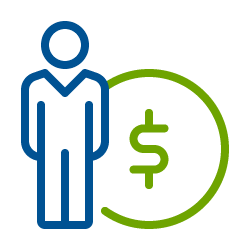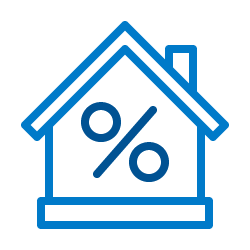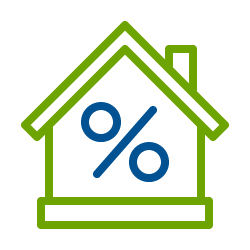What’s APR, and how does it work?

If you have a loan or credit card, you’ve most likely heard of an annual percentage rate (APR). In the world of finance, it can be difficult to remember all these acronyms and their purposes, and APR is one them! It might seem relatively simple, but not everyone knows for sure how calculating interest works.
What’s APR?
The annual percentage rate (APR) for a loan or credit card is the overall cost you pay each year to borrow money expressed as a percentage. According to the Consumer Financial Protection Bureau, “the APR is a broader measure of the cost to you of borrowing money since it reflects not only the interest rate but also the fees that you have to pay to get the loan.” So basically, if you have a higher APR, you’ll end up paying more over the life of the loan.
How APR works
The APR is expressed as an interest rate, which is calculated at a percentage of the amount you borrowed.
It’s important to know that calculating your interest using the APR isn’t the same for all types of loans, and the calculations can depend on other factors such as compound interest. For this example, we’ll use APR to calculate the monthly interest of an outstanding credit card account (assuming there are no fees).
1. Convert your APR to a daily rate. To do this, divide your current APR by 365.
Example: 14.99% / 365 = 0.041%
2. The balance of your credit card may change each day as you make payments and add new charges. Your financial institution will calculate the average daily balance based on this information. If your balance fluctuated evenly between $2,000 and $3,000, your average daily balance would be $2,500.
Example: $2,500
3. Multiply the average daily balance times your daily rate from the first step. Remember, to convert your interest rate into a decimal, move the decimal point two spaces to the left.
Example: $2,500 x 0.00041 = $1.03
4. Finally, multiply that by the number of days in the billing period. This will tell you roughly how much interest you’re paying for that billing period.
Example: $1.03 x 30 = $30.90
Know the types of APR
There are many types of APRs. If you look on your credit card statement, you might find that you have an APR for purchases, balance transfers, and cash advances. Each APR will vary, and one could be higher than the other.
Introductory & regular rates
Some credit card companies also offer introductory rates, so it’s important to know the difference between those and the regular rate.
Penalty APR
There’s also a penalty APR. This applies when you miss a payment or are late. If this happens, some credit card companies could raise your APR to a new, higher rate.
Variable vs. Fixed APR
Variable APRs shift depending on the prime rate. For example, if the prime rate increases, so will your APR, while fixed rates don’t change for the term of your loan.
The takeaway
Annual percentage rates are not as simple as you might think! There are multiple types, and each is determined differently. Luckily, there are resources out there such as Calculator.net that provide calculators for different types of loans so you can calculate your interest.
Is your credit card interest rate way higher than the one in the example? Credit unions typically offer lower rates on loans and credit cards! You can check out Centra’s current loan rates here.














